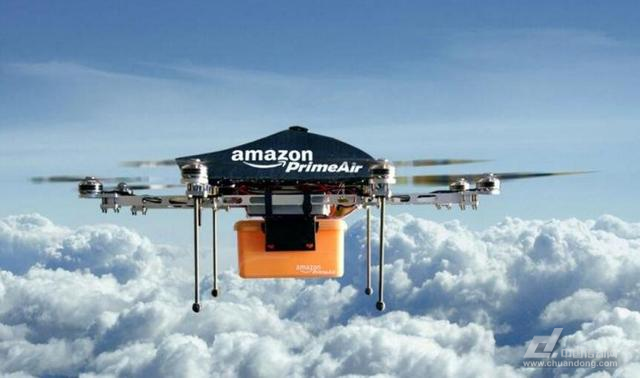In the Korean drone market, which accounts for 10 billion won per year, Chinese companies account for more than 90%. South Korean media "Electronic News," reported on the 23rd, compared to professional products, the entry-level sales of the lowest-end products, the average price of 200,000 won (about 1200 yuan).
With the increasing demand for logistics automation, the development of drone delivery has gradually become mainstream. At present, drone delivery has entered a new stage, and testing and deployment of major development companies are proceeding at an accelerated pace. Of course, in practical applications, drone delivery still faces many obstacles that need to be solved one by one. But there is no doubt that drone delivery will become an important part of the future "intelligent logistics."

With the continuous improvement of people’s living standards and the continuous expansion of e-commerce development, the number of express parcels is now growing rapidly each year. At present, the number of couriers in the major courier companies is more than 100,000. With the further increase in the cost of labor, the delivery area is further extended. Traditional ground transportation and manpower have been unable to meet the needs of express delivery companies.
In recent years, under Amazon's concept of developing new logistics for delivery of drones, the world’s major express delivery companies have begun to enter this field in order to increase the efficiency of express delivery and reduce transportation costs. Technically speaking, the current drones have become mature in use, which also makes drone delivery gradually into practice.
Drone delivery began to accelerate applications
The first city in the world to provide drone delivery service is ReykjavÃk, the capital of Iceland. ReykjavÃk is a bay city divided into different regions by a large bay and several small rivers. This makes the transportation of goods in the region time consuming, tedious and slow.
To address this dilemma, Flytrex partnered with AHA, the largest online shopping platform in Iceland, to launch a drone delivery service. ReykjavÃk citizens can shop on AHA and then wait at home for drones to deliver. Flytrex and AHA also hope to eventually push this service to overseas markets.
Subsequently, drone delivery services began to be accelerated in other countries around the world. In Japan, Lotte and Rosen, an IT company, announced that the two companies will jointly implement drone-distribution products in conjunction with the sale of dedicated truck sales; in Australia,
The Project Wing team of Google’s parent company, Alphabet’s drone delivery project, launched a series of tests to deliver drones directly to residents’ backyards; in Switzerland, the delivery drone system jointly developed by Matternet and Daylam completed the first time. Man-machine logistics delivery delivery.
Drone delivery model
At present, the development of delivery of drones has become more and more mature. Different companies have also chosen delivery models with certain differences, which are mainly divided into direct and truck relays.
The direct delivery representative is Google parent company Alphabet. Its drone delivery project is based on allowing drones to deliver goods directly from the store to consumers without going through the other links. Although this model is more attractive and direct, it faces multiple obstacles such as convergence and endurance at both ends and security.
Truck relay is the main choice for other development companies. Due to factors such as the drone's endurance, safety, and operational difficulty, many companies have chosen to use trucks as relay points, carry goods and drones for distribution, and accelerate commercial penetration.
Drone delivery challenges
Although the development of delivery of UAVs continues to accelerate, commercial processes are already open, but at present, the development of delivery drones still faces many challenges.
The first is in distribution. In the implementation of distribution, drones need to identify safe, convenient delivery locations and avoid obstacles that may occur during flight or delivery, such as cars, furniture or branches placed outdoors, and wires. And drones have limited wind and rain resistance and are greatly affected by bad weather.
Second, drone delivery costs a lot. At present, a standard unmanned aerial vehicle system may require more than 100,000 yuan, plus the cost of battery components, labor costs, maintenance costs, and loss costs. The cost of drone delivery is not low.
Thirdly, drones currently do not have uniform standards and standards, airspace use and management regulations and standards are not perfect, and a unified system of regulations, standards and systems for airspace allocation, use, and management has not yet been formed.
In the future, drone delivery will require large-scale popularization and application, and it will also need to face up to the current challenges, step by step, gradually solve difficulties and establish the correct direction of development according to the laws and regulations, industry standard specifications, and the precise needs of the market. Promoting the delivery of drones has become the new normal for logistics, helping the healthy and sustainable development of the logistics industry and drone industry.
Semiconductor Moly
Semiconductor Moly
YANGZHOU POSITIONING TECH CO., LTD. , https://www.cnpositioning.com
